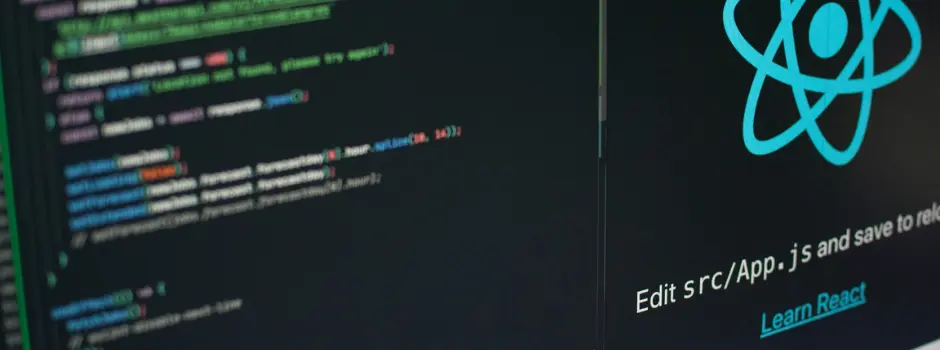![Top 9 TCS Xplore Python Coding Questions [DeCode with GUVI] 1 Post thumbnail](https://www.guvi.in/blog/wp-content/uploads/2022/08/6.-TCS-Xplore-Python-Coding-Questions.png)
Top 9 TCS Xplore Python Coding Questions [DeCode with GUVI]
Mar 24, 2025 7 Min Read 46265 Views
(Last Updated)
TCS Xplore is a learner-centric program with a 120-hour progressive induction curriculum. Find the most important TCS Xplore Python Coding questions here.
A tech career in India’s IT trendsetter Tata Consultancy Services (TCS), is one of the top aspirations of most Indian techies. If you are still exploring TCS, let me tell you that TCS was India’s first listed company to hit a $100 billion m-cap. So, rightly called the crown jewel of Indian IT.
Whether you are a seasoned IT Expert or a beginner just trying to discover your identity on the ever-green IT planet, joining an Indian venture like TCS would open up unlimited opportunities.
Xplore 1 and Xplore 2 both are self and pre-learning programs for TCS NINJA Fresher’s 2019. All the TCS NINJA freshers are given the option to select either Xplore1 or Xplore2.
![Top 9 TCS Xplore Python Coding Questions [DeCode with GUVI] 2 TCS Xplore python coding questions](https://www.guvi.in/blog/wp-content/uploads/2022/08/TCS-Explore.png)
For your information,
Table of contents
- The TCS Xplore program is coupled with a plethora of engagements which include:
- Top TCS Xplore Python coding questions & answers:
- Q1. Write a Python code to print the position or index of a given string (taken as input from a user) from a given list of strings.
- Q2. Make a function check_palindrome() that takes a list of strings as an argument. It returns the string which is a palindrome.
- Q3. Create a function count_words() which takes a string as input and creates a dictionary with a word in the string as a key and its value as the number of times the word is repeated in the string. It should return the dictionary.
- eg: "hello hi hello world hello"
- dict={'hello':3,'hi':1,'word':1}
- Q4. Write a Python program to create a class called mobile which contains a method called display that displays the name of the mobile owner, mobile brand, colour and camera pixel.
- Q5. Write a Python program to calculate the salary of the temporary staff using Multilevel Inheritance.
- Q6. Write a Python program to check the quantity of petrol in the bike using exception handling.
- Q7.Write a Python program to display the Passport details of the Person using composition.
- Q8. Longest Increasing Subsequence
- Q9. Consider a row of n coins. We play a game against an opponent by alternative turns. In each turn, a player selects either the first or last coin from the row. Now remove it from the row permanently and take the value of a coin. Find the maximum possible amount of money.
- Wrapping Up
The TCS Xplore program is coupled with a plethora of engagements which include:
- AsCEnD: This program will assist you in acing your Digital skills. You will also be certified and then can flaunt your competencies.
- Hackathons: After mastering digital skills, you might look forward to testing the same. Then comes a fantastic platform to test your skills in the form of hackathons. You can showcase your prowess in Digital Technologies via hackathons.
- Digital Connect Series: Get insights from leaders on the Organization’s strategy for growth, current industry challenges and expectations from the customers
- Business Unit Connect Business inclusive learning experience through quizzes, hackathons, Leader Connects etc.
- Internships: Opportunity to learn and grow at one of the leading IT companies in the world.
So, let us now quickly jump into the
Top TCS Xplore Python coding questions & answers:
If you are aspiring to explore Python through a self-paced course, try GUVI’s Python certification course with IIT Certification.
Q1. Write a Python code to print the position or index of a given string (taken as input from a user) from a given list of strings.
Ans. The program will take input from the user in the form of a string and will pass the string as an argument to a function. The function will take the strings as arguments and return the Position(or index) of the list if the passed string is present in the list, else it’ll return “String not found”. If the passed strings are present at multiple indices, in that case, the function should only return The first index of occurrence.
Considering the above scenario into account, build the logic to print the position of the passed string from a given list of strings.
Refer to the below instructions and sample input-Output for more clarity on the requirement.
Input:
4
Hello Good Morning
abcd123Fghy
India
Progoti.c
India
Output:
The position of the searched string is: 2
def isPresent(lis,st):
for i in range(0, len(lis)):
if lis[i] == st:
return i
lis = []
for j in range(int(input())):
lis.append(input())
st = input()
ind = isPresent(lis,st)
if ind == -1:
print(“String not found”)
else:
print(“Position of the searched string is: “,ind)
Q2. Make a function check_palindrome() that takes a list of strings as an argument. It returns the string which is a palindrome.
Input:
3
malayalam
radar
nitish
Output:
malayalam
radar
code:
def check_palindrome(lis):
palin_lis = []
for i in lis:
if i == i[::-1]:
palin_lis.append(i)
return palin_lis
lis = []
for i in range(int(input())):
lis.append(input())
for _ in check_palindrome(lis):
print(_)
Q3. Create a function count_words() which takes a string as input and creates a dictionary with a word in the string as a key and its value as the number of times the word is repeated in the string. It should return the dictionary.
eg: “hello hi hello world hello”
dict={‘hello’:3,’hi’:1,’word’:1}
Create another function max_accurance_word() which takes a string as input and returns the word which is occurring a maximum number of times in the string. Use the count_words function inside this function.
Sample input:
“hello hi hello world hello”
Sample output:
‘hello’
Code:
def count_words(string):
l=string.split()
s=set(l)
d={}
for i in s:
x=l.count(i)
d[i]=x
return d
def max_occurance(string):
d=count_words(string)
l1=[]
for i in d.values():
l1.append(i)
max1=max(l1)
for i in d.keys():
if d[i]==max1:
return i
string=input()
print(max_occurance(string))
Q4. Write a Python program to create a class called mobile which contains a method called display that displays the name of the mobile owner, mobile brand, colour and camera pixel.
Input Format:
String => name
String => brand name
String => color
Integer => pixel
Output Format:
Output is a String
Sample Input:
Dinesh
Lenovo vibe K5 note
gold
13
Sample Output:
Dinesh’s own Lenovo vibe K5 note gold colour smartphone has a 13 MP camera
Case 1
Case 2
Input (stdin)
Dinesh
Lenovo vibe K5 note
gold
13
Output (stdout)
Dinesh’s own Lenovo vibe K5 note gold colour smartphone has a 13 MP camera
Input (stdin)
Manoj
Vivo v11
white
21
Output (stdout)
Manoj own Vivo v11 white colour smartphone having a 21 MP camera
Code:
class mobile:
def __init__(self,owner,brand,color,camera):
self.owner = owner
self.brand = brand
self.color = color
self.camera = camera
def display(self):
print(“{owner} own {brand} {color} color smartphone having {camera} MP camera”.format(owner = self.owner,brand = self.brand,color = self.color,camera = self.camera))
a= input()
b= input()
c= input()
d= input()
obj = mobile(a,b,c,d)
obj.display()
Read out everything Python and beyond here: https://www.guvi.in/blog/?s=Python
Q5. Write a Python program to calculate the salary of the temporary staff using Multilevel Inheritance.
Description:
Create a class Person which contains a constructor __init__() and a method display(self). The method displays the name of the person
Create another class Staff which inherits Person. It contains a constructor __init__() and a method display(self). The method displays Id.
Create another class Temporarystaff which inherits Staff, it also contains a constructor __init__() and two method displays (self), and Salary(self).
The method Salary(self) returns the total salary earned. The method display(self) displays a number of days, hours worked and total salary earned.
salary earned = total hours worked *150
Input Format:
String => name
Integer => Id
Integer => number of days
Integer => hoursworked
Output Format:
All outputs contain strings and integers.
Sample Input:
Tilak
157934
20
8
Sample Output:
Name of Person = Tilak
Staff Id is = 157934
No. of Days = 20
No. of Hours Worked = 8
Total Salary = 24000
Case 1
Case 2
Input (stdin)
Tilak
157934
20
8
Output (stdout)
Name of Person = Tilak
Staff Id is = 157934
No. of Days = 20
No. of Hours Worked = 8
Total Salary = 24000
Input (stdin)
Praveen
124563
26
6
Output (stdout)
Name of Person = Praveen
Staff Id is = 124563
No. of Days = 26
No. of Hours Worked = 6
Total Salary = 23400
Code:
class employee:
def __init__(self,name,id,days,hours):
self.name = name
self.id = id
self.days = days
self.hours = hours
def display(self):
print(“Name of Person = {name}\nStaff Id is = {id}\nNo. of Days = {days}\nNo. of Hours Worked = {hours}\nTotal Salary = {salary}”.format(name=self.name,id=self.id,days=self.days,hours=self.hours,salary=self.days*self.hours*150))
a = input()
b = int(input())
c = int(input())
d = int(input())
obj = employee(a,b,c,d)
obj.display()
Q6. Write a Python program to check the quantity of petrol in the bike using exception handling.
If there is no petrol i.e. null in the bike it should raise an exception. That exception is handled by using except block and it should print “There is no fuel in the bike”. Otherwise, it should the show quantity of petrol on the bike.
Input Format:
The input consists of a string which denotes a fuel.
Output Format:
Output is a String
Sample Input:
40
Sample Output:
Petrol Quantity = 40
Case 1
Case 2
Input (stdin)
40
Output (stdout)
Petrol Quantity = 40
Input (stdin)
NulL
Output (stdout)
There is no fuel in the Bike
Code:
a=input()
try:
if(a.lower()!=’null’):
print(“Petrol Quantity = “,a)
else:
raise ValueError
except(ValueError) :
print(“There is no fuel in the Bike”)
Some more TCS Xplore Python coding questions & answers:
Q7.Write a Python program to display the Passport details of the Person using composition.
Description:
Create a class Passport and class Person. Compose the class Passport in the class Person.
Class Passport contains constructor __init__() which sets the name, address and passport no.
Display the name of the person, Address and passport number of the person.
Input Format:
Name => String
Address => String
passport number => String
Output Format:
Three outputs. All are String
Sample Input:
RamKumar
Kollam
J7546891
Sample Output:
Name: RamKumar
Address: Kollam
Passport Number: J7546891
Case 1
Case 2
Input (stdin)
RamKumar
Kollam
J7546891
Output (stdout)
Name: RamKumar
Address: Kollam
Passport Number: J7546891
Input (stdin)
Purushothaman
Mumbai
J1535231
Output (stdout)
Name: Purushothaman
Address: Mumbai
Passport Number: J1535231
Code:
#Type your code here…
class passport:
def __init__(self,name,address,pa):
self.name=name
self.address=address
self.pa=pa
def display(self):
print(“Name :”,self.name)
print(“Address :”,self.address)
print(“Passport Number :”,self.pa)
class person(passport):
def __init__(self,name,address,pa):
super().__init__(name,address,pa)
super().display()
a=input()
b=input()
c=input()
e1=person(a,b,c)
Prepare to crack the TCS Xplore Python Coding questions with GUVI: Python Course with IIT Certification
Q8. Longest Increasing Subsequence
Given an integer array ‘A’. Find the length of its Longest Increasing Subsequence of a sub-array from the given integer array. The elements are sorted in monotonic increasing order. You need to create a function that takes two inputs – integer ‘n’ and an integer array containing ‘n’ integers. To return the length of its LIS.
Format:
Input:
The integer input is ‘n’. And Integer array ‘A’ input, contains ‘n’ integers.
Output:
Return the length of its LIS.
Constraint:
1 <= input1 <= 1000
Example:
Input:
3
1, 3, 2
Output:
2
Case 1
Case 2
Input (stdin)
3
1 3 2
Output (stdout)
2
Input (stdin)
9
10 22 9 33 21 50 41 60 80
Output (stdout)
6
Code:
def lis(arr,n):
lis = [1]*n
for i in range (1, n):
for j in range(0 , i):
if arr[i] > arr[j] and lis[i]< lis[j] + 1 :
lis[i] = lis[j]+1
maximum = 0
for i in range(n):
maximum = max(maximum , lis[i])
return maximum
n=int(input())
arr = []
arr=list(map(int, input().split(‘ ‘)[:n]))
print(lis(arr,n))
The next coding question from the list of TCS Xplore Python coding questions is here:
Q9. Consider a row of n coins. We play a game against an opponent by alternative turns. In each turn, a player selects either the first or last coin from the row. Now remove it from the row permanently and take the value of a coin. Find the maximum possible amount of money.
Example:
Input:
4
5 3 7 10
Output:
15
Case 1
Case 2
Case 3
Case 6
Case 7
Case 8
Case 9
Case 10
Input (stdin)
4
5 3 7 10
Output (stdout)
15
Input (stdin)
7
8 15 3 7 10 22 5
Output (stdout)
26
Input (stdin)
8
10 3 8 2 6 7 15 1
Output (stdout)
39
Input (stdin)
5
1 2 3 4 5
Output (stdout)
9
Input (stdin)
7
11 22 33 44 55 66 88
Output (stdout)
187
Code:
def optimalStrategyOfGame(arr, n):
table = [[0 for i in range(n)]
for i in range(n)]
for gap in range(n):
for j in range(gap, n):
i = j – gap
x = 0
if((i + 2) <= j):
x = table[i + 2][j]
y = 0
if((i + 1) <= (j – 1)):
y = table[i + 1][j – 1]
z = 0
if(i <= (j – 2)):
z = table[i][j – 2]
table[i][j] = max(arr[i] + min(x, y),
arr[j] + min(y, z))
return table[0][n – 1]
n=int(input())
arr1 = [int(i) for i in input().split()]
print(optimalStrategyOfGame(arr1, n))
Wrapping Up
So, these are the top TCS Xplore Python Coding Questions & Answers for you. If you have any questions that you think are important and not included here, kindly share them below in the comment section. This place for knowledge sharing is trending as the next best destination for learning Technology.
![Top 9 TCS Xplore Python Coding Questions [DeCode with GUVI] 3 TCS XPLORE, GUVI](https://www.guvi.in/blog/wp-content/uploads/2022/08/guvi-page-1200x542.png)
Articles similar to TCS Xplore Python Coding Questions & Answers:
Top Postman Interview Questions
If you are aspiring to explore Python through a self-paced course, try GUVI’s Python certification course with IIT Certification.























![Top 25 Business Analyst Interview Questions and Answers [2025] 5 feature image-Business Analyst Interview Questions With Answers](https://www.guvi.in/blog/wp-content/uploads/2023/07/feature-image-Business-Analyst-Interview-Questions-With-Answers.jpg)

![Top 20 RPA UiPath Interview Questions and Answers [2025] 7 rpa uipath interview questions](https://www.guvi.in/blog/wp-content/uploads/2023/02/Top-20-RPA-UiPath-Interview-Questions-and-Answers.png)


![Top 35 HTML and CSS Interview Questions with Answers [2025] 9 html and css interview questions with answers](https://www.guvi.in/blog/wp-content/uploads/2022/06/2.-HTML-Css.png)


Did you enjoy this article?